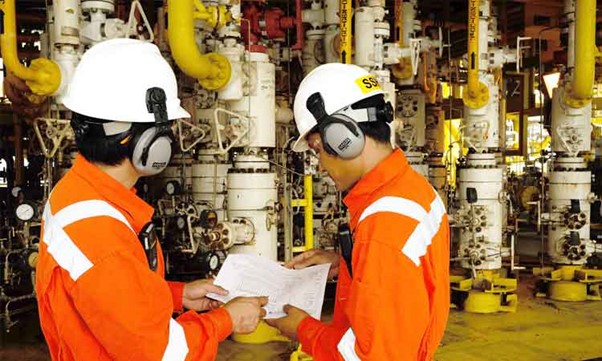
Risk assessment is a systematic process of identifying hazards and evaluating any associated risks within a workplace, then implementing reasonable control measures to eliminate or reduce the risks to as low as reasonably practicable.
The objective of risk assessment is to identify exposure to hazards during work activities so that associated risks can be understood, evaluated and appropriate risk reduction measures applied to ensure that work is conducted at an acceptable level.
Terminologies used in Risk Assessment
- Risk: Risk is the combination of the likelihood for an incident to happen and the degree of the consequences if the incident actually occurs.
- Initial/Potential Risk: Initial Risk is the risk level that is present before any risk reduction measures are implemented. However, risk reduction measures that are part of the design of the work place are taken into consideration.
- Residual Risk: Residual risk is the risk level that remains after all risk reduction measures have been put in place. This is the risk level that will apply when the task/activity is performed.
- Low Potential Risk: Any risk that falls in the Very Low or Low level on the risk matrix.
- High Potential Risk: Any risk that falls in the High or Very High level on the risk matrix.
- Risk Management: The total procedure associated with identifying a hazard, assessing the risk, putting in place control measures and reviewing the outcomes.
- Hazard: A condition in the workplace, equipment, or a method of carrying out an activity which has the potential to cause harm.
Why Is Risk Assessment Important?
Risk assessments are very important as they form an integral part of an occupational health and safety management plan. They help to:
- Create awareness of hazards and risk.
- Identify who may be at risk (e.g., employees, cleaners, visitors, contractors, the public, etc.).
- Determine whether a control program is required for a particular hazard.
- Determine if existing control measures are adequate or if more should be done.
- Prevent injuries or illnesses, especially when done at the design or planning stage.
- Prioritize hazards and control measures.
- Meet legal requirements where applicable.
Five Steps to Risk Assessment
The UK Health and Safety Executive has produced guidance known as the ‘Five Steps to Risk Assessment’.
The process is:
Step 1 – Identify the hazards
Step 2 – Decide who might be harmed and how
Step 3 – Evaluate the risks and decide on precautions
Step 4 – Record your findings and implement them
Step 5 – Review your assessment and update if necessary
Step 1: Identify the Hazards
Hazards may be identified by:
- Walking round the workplace and looking for things that may cause harm
- Asking employees if they have noticed anything that could cause harm
- Checking manufacturers’ data sheets and instructions
- Checking accident, near miss and ill-health records
Hazards can be grouped into five categories:
- Physical Hazards – working at height, moving vehicles, noise, wet surfaces, sharp objects, naked flames, poor lighting, uneven surfaces, electricity, moving parts of machinery, vibration, hot surfaces, object(s) on the floor, ultra-violet radiation, temperature extremes, confined spaces.
- Chemical Hazards – cleaning products, gases, smoke, solvents, fumes, dusts.
- Biological Hazards – blood or other body fluids, bacteria and viruses, fungi / moulds, human waste, animal and bird droppings, insect and animal bites, decomposed food waste.
- Ergonomic Hazards – awkward movement, poor workstation design, repetitive movement, frequent lifting.
- Psychosocial Hazards – stress, depression, work pressure, monotonous jobs, unsociable hours, psychosocial barrier.
Step 2: Decide Who Might be Harmed and How
Identify all the people who might be harmed.
Employees:
– Employees involved in the activity (operatives, supervisors, managers).
– Employees who may be affected by the activity (maintenance workers, cleaners, security staff).
Non-employees:
– Visitors (contractors, delivery drivers, customers)
– Others (members of the public, passers-by, neighbours, road users)
Groups at particular risk
Some hazards may present a particular risk to certain individuals or groups. These include young people, new and expectant mothers, individuals with disabilities or medical conditions, new employees, home workers, lone workers.
Step 3: Evaluate the Risks and Decide on Precautions
Having identified the hazards, and decided who might be harmed and how, you must decide what to do to reduce the risk.
The employer should do everything ‘reasonably practicable’ to protect people from harm.
The easiest way to do this is to compare what is being done with good practice.
Step 4: Record your Findings and Implement Them
The significant findings of the risk assessment should be kept electronically or in writing.
Details that should be recorded are:
– What hazards were found
– Who might be harmed and how
– What you are already doing to control the risk
– What further action is necessary, by whom and by when.
Step 5: Review your Risk Assessment and Update if Necessary
Risk assessments should be reviewed on a regular basis to make sure they are still relevant. This is normally done once a year.
Other occasions when risk assessments may need to be reviewed include:
– After significant changes to work processes, equipment or personnel
– After an accident
– After a number of near misses.
Risk Assessment and Competency
The person carrying out the risk assessment must be competent. Competence is a mixture of knowledge, experience and skills, mostly gained through training and qualifications.
A person carrying out a risk assessment should:
– Have knowledge of the risk assessment process
– Be capable of identifying hazards
– Know the principles of risk control
– Be able to produce a report.
In conclusion, employers should make a suitable and sufficient risk assessment of all the activities in their workplace. Risk assessment is an essential element in any health and safety management system aimed at controlling risks within an organisation.
Primelift Safety Resources Limited provides Hazard Identification and Risk Management Training to ensure a safe place of work.
Contact us: www.primeliftsafetyng.com. Call us on +234 9115687051 or Email us at training@primeliftsafetyng.com for more information










